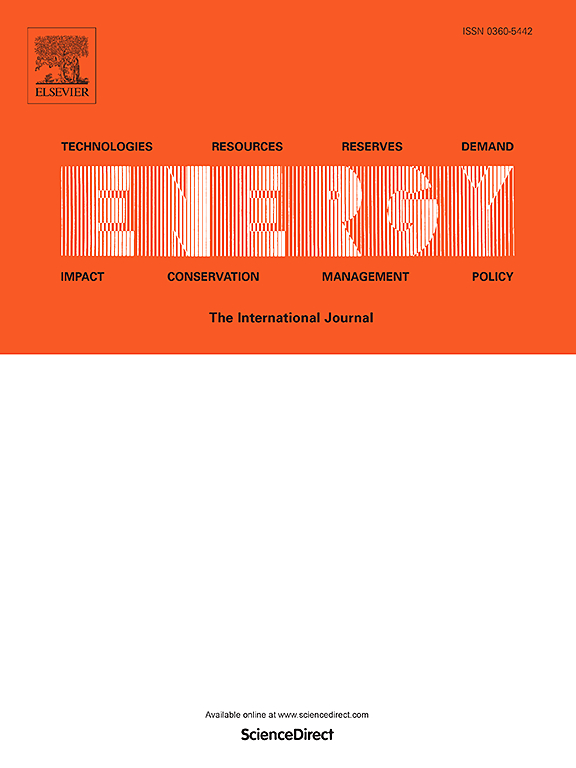Study on the fluid cross-mixing characteristics in tube bundle channels with transverse uneven heat flux distribution
IF 9
1区 工程技术
Q1 ENERGY & FUELS
引用次数: 0
Abstract
In the complex system of the Nuclear Power Plant, different reasons cause key equipment such as the core, evaporator, and heat exchanger to have uneven local heat flux distribution perpendicular to the flow direction. This leads to the fluid cross-mixing between the hot and cold zones, which is crucial for calculating local heat transfer and some other issues that are derived from cross-mixing. Therefore, the paper investigated the lateral fluid cross-mixing characteristics under non-uniform heating conditions by numerical simulation to understand the mixing mechanisms and trends. The finding demonstrated that non-uniform heating causes the uneven distribution of the fluid temperature, which in turn produces variations in the fluid viscosity and the flow resistance. Hot side fluid with high temperature has low viscosity and low flow resistance, forcing the fluid of the cold side to flow towards the hot side fluid. Additionally, the fluid cross-mixing model was developed based on the numerical simulation to provide the local velocity distribution for predicting the local heat transfer coefficient and researching other derivative issues by solving the mass, momentum, energy conservation equation, and the deduced lateral momentum equation as a supplementary equation. The model can describe the flow trend along the path, and the calculation error between the model and the Fluent is about −5.16 %∼2.14 %.
求助全文
约1分钟内获得全文
求助全文
来源期刊

Energy
工程技术-能源与燃料
CiteScore
15.30
自引率
14.40%
发文量
0
审稿时长
14.2 weeks
期刊介绍:
Energy is a multidisciplinary, international journal that publishes research and analysis in the field of energy engineering. Our aim is to become a leading peer-reviewed platform and a trusted source of information for energy-related topics.
The journal covers a range of areas including mechanical engineering, thermal sciences, and energy analysis. We are particularly interested in research on energy modelling, prediction, integrated energy systems, planning, and management.
Additionally, we welcome papers on energy conservation, efficiency, biomass and bioenergy, renewable energy, electricity supply and demand, energy storage, buildings, and economic and policy issues. These topics should align with our broader multidisciplinary focus.
 求助内容:
求助内容: 应助结果提醒方式:
应助结果提醒方式:


